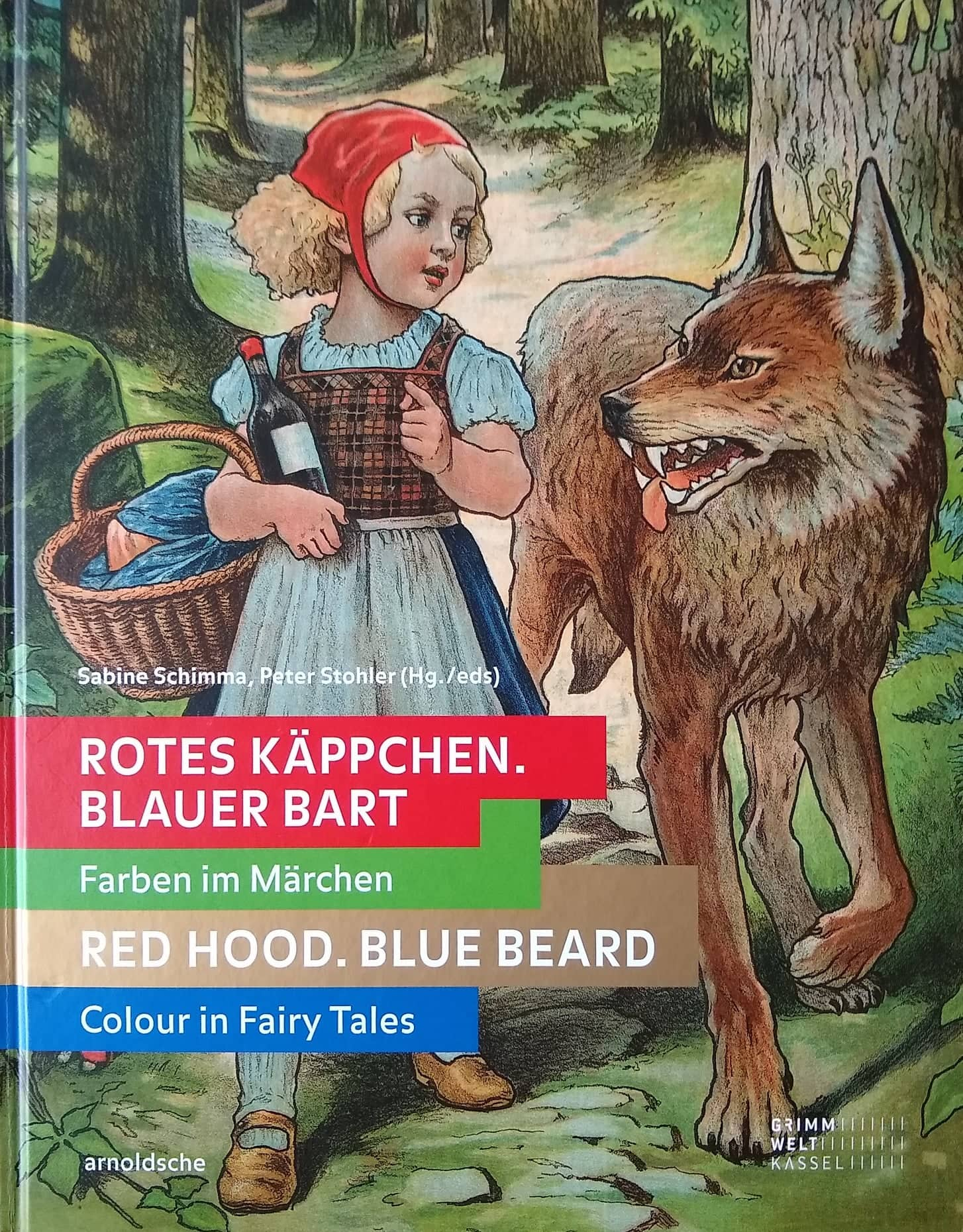by Sabine Schimma. The first chapter in:
Rotes Käppchen. Blauer Bart – Farben im Märchen. Red Hood. Blue Beard – Colour in Fairy Tales
© 2019 arnoldsche Art Publishers, Stuttgart, editors/authors, translator. ISBN: 978-3-89790-573-3 
(footnotes – references – removed)
Black, like white, is a so-called achromatic colour. Black has associations of darkness, shadow and dirt. It symbolises evil, negation and destruction. In the fairy tale Mother Holle (GFT 24), the lazy girl gets a kettleful of pitch poured over her in return for her idleness – the sticky blackness has the effect of a stigma (Fig. 1). In The White Bride and the Black Bride (GFT 135), God causes the heroine’s stepmother and stepsister to turn ‘as black as night and as ugly as sin’, since they refuse to show him the way into the village.
Blackness and obscurity are mostly indeterminable and unfathomable, like the night and the profound darkness of the universe. They therefore offer ample opportunities to project negative imaginings; after all, a primal fear of obscurity resides in humanity. When, in The Bremen Town-Musicians (GFT 27), one of the robbers who fled from the animals returns to the house, they drive him away again. In the darkness he ‘identifies’ the donkey kicking out at him as a ‘black monster’, which, he says, has struck him with a wooden club.
Black, though, can also lay the ground for positive development. The world emerges out of absolute obscurity in numerous Creation myths: in the Bible, for example, or in Hesiod’s Theogony. In fairy tales, too, the black of spellbound beings is the point of origin for the process of their redemption, which often ends in the colour white. Following the shedding and burning of his animal skin, Hans the Hedgehog (GFT 108) lies in bed black, until the doctor’s treatment turns him white. The King’s Son Who Feared Nothing (GFT 121) redeems a black maiden by undergoing torments by devils for three consecutive nights, remaining silent in the process. Once the tortures have been endured, the king’s daughter is ‘snow-white, and fair as day’, and the spell is thereby broken.
Often fairy-tale heroes have to liberate themselves from the darkness of destiny through their own strength. In Strong Hans (GFT 166), robbers bring his mother and Hans as a child into a cave in the black wood, in which the mother is compelled to keep house for the reckless knaves. At twelve years of age, Hans succeeds in freeing the two of them from the dark robbers’ cave. In her mantle made out of animal pelts, Allerleirauh (GFT 65) flees her father’s advances into the dark night and also blackens her face so as not to be recognised. In The Devil’s Sooty Brother (GFT 100), a discharged soldier enters the service of the Prince of Hell – under the condition that he not wash, comb, or cut his nails and hair for a term of seven years (Fig. 2). Totally filthy, he complies with the cleansing ban and performs his tasks to the Devil’s satisfaction. The latter helps him to defend himself against a cheating landlord and thereby even becomes a positive figure.
Black is also a symbolic colour of death and decay, for organic material often takes on this colour in the process of decomposing. An eloquent example of this is the plague, described as the ‘Black Death’. As a negation of light and life, black is the most frequently used colour of mourning in our culture. (…)
(…) (…)
(…) (…)
The chapter on White now follows in the book: click on the poppy for the first few paragraphs:
(Click here to go back to the beginning of the Red Hood. Blue Beard extracts.)
